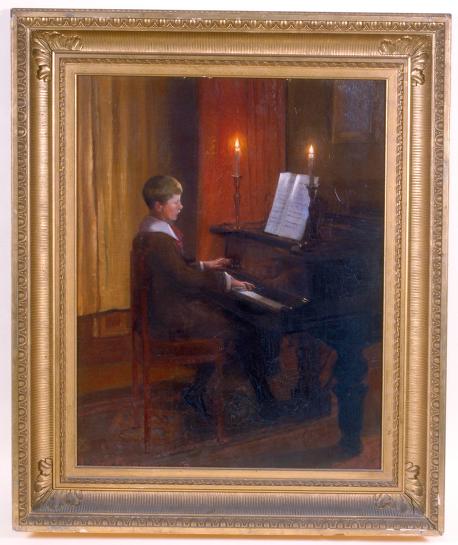|

(c) Pocumtuck Valley Memorial Association, Deerfield MA. All rights reserved.
Customs : True Refinement
|
|
The consumer revolution of the previous century put objects and the gracious living they represented within reach of middling sorts as well as the wealthy. This trend continued in the twentieth century as ordinary Americans sought to acquire the social graces and skills that defined for them true gentility.
Parlor music, and piano playing in particular, epitomized gentility throughout the Victorian period. The piano symbolized good taste and the moral respectability that the culture increasingly defined as part of true refinement. To play the piano meant that a person had the time, refinement, and money to acquire this accomplishment. Piano playing also had a moral dimension. The culture promoted music as part of a serene, civilized domestic atmosphere that provided a refuge from the rough-and-tumble world of work and politics. This view complemented the period's emphasis on the role of women as nurturers and keepers of the home circle. A young woman with perfect posture gracefully playing the piano within a genteel and comfortable family circle was a compelling image for turn-of-the-century Americans.
This painting of a young boy playing the piano is a study in Victorian domesticity and gentility. The boy has had an opportunity to learn the instrument. He has attained a culture and taste that set him apart from those who lack his economic and social advantages. The painting also suggests how Americans at that time saw the home as a private space safe from the workplace and the public arena. It is an ideal ordinary working people sought to attain when they paid for piano lessons for their children. Its link to the female-dominated domestic sphere cast the piano as primarily a female accomplishment, but boys could and did excel at the instrument. Lucia Fairchild painted this portrait of her brother, Blair, in 1891.
top of page
|
"Study by Candlelight"
| artist Lucia Fairchild Fuller (1870-1924) |
| date 1891 |
| location Unknown |
| height 30.0" |
| width 24.0" |
| process/materials oil on canvas |
| item type Art/Painting |
| accession # #1995.14.03 |
|





